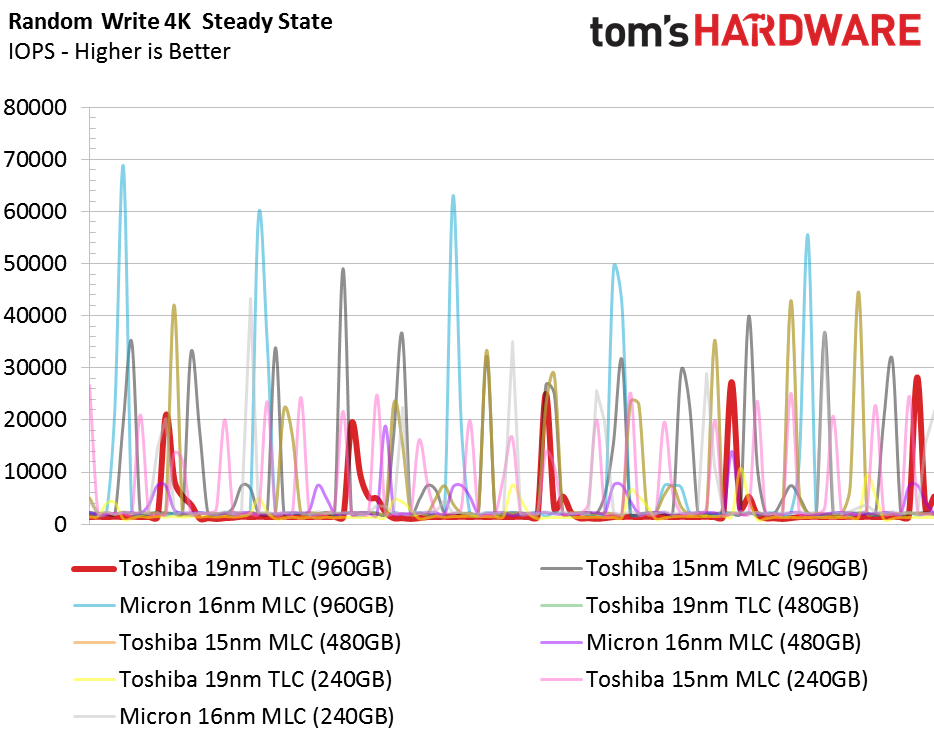Phison S10: Toshiba MLC And TLC Versus Micron L95B MLC
Phison offered to let us test its S10 controller with three flash types that will ship in 2015: Toshiba's A19 TLC, 15nm MLC and Micron L95B 16nm MLC.
4KB Random Write Steady State Performance


The first image that shows the preconditioning phase is all but useless with this many drives, particularly when they all have such a large spread between high and low performance.
The second image offers a clearer look at what the drives do once they're in steady state. We see there is more of a relationship between capacity and low steady state performance than there is the type of flash used. The TLC burst increases are spread further out than the spikes with MLC.
Get Tom's Hardware's best news and in-depth reviews, straight to your inbox.
Current page: 4KB Random Write Steady State Performance
Prev Page 128KB Sequential Mixed-Workload Steady State Performance Next Page PCMark 8 Real-World Software Performance
Chris Ramseyer was a senior contributing editor for Tom's Hardware. He tested and reviewed consumer storage.
-
James Mason Replywhoa, where did you guys get some 4800GB just for the battery life tests?
Yeah so many typos I almost thought they actually did get 5 terabyte SSDs somehow.
-
Frozen Fractal I was arranging a chart while reading this article to see who actually wins. Seems like Toshiba 15nm MLC wins the test, with Micron 16nm MLC close on tail and TLCs wayyyy off :D.Reply
It is kinda disappointing to see TLCs being outperformed so brutally. I guess increased SLC buffer should mitigate the problem? Samsung already has like this in the EVO 2TB so what do you think Chris?
Also, does lithography has anything to do with performance? I mean Micron's NANDs are close to Toshiba's MLCs and Micron's cells are just 1nm bigger than Toshiba's MLCs. Can this be co-related somehow? -
WyomingKnott It is so cool that they provided these for a head-to-head comparison. Finally, a comparison with all other variables really held even.Reply